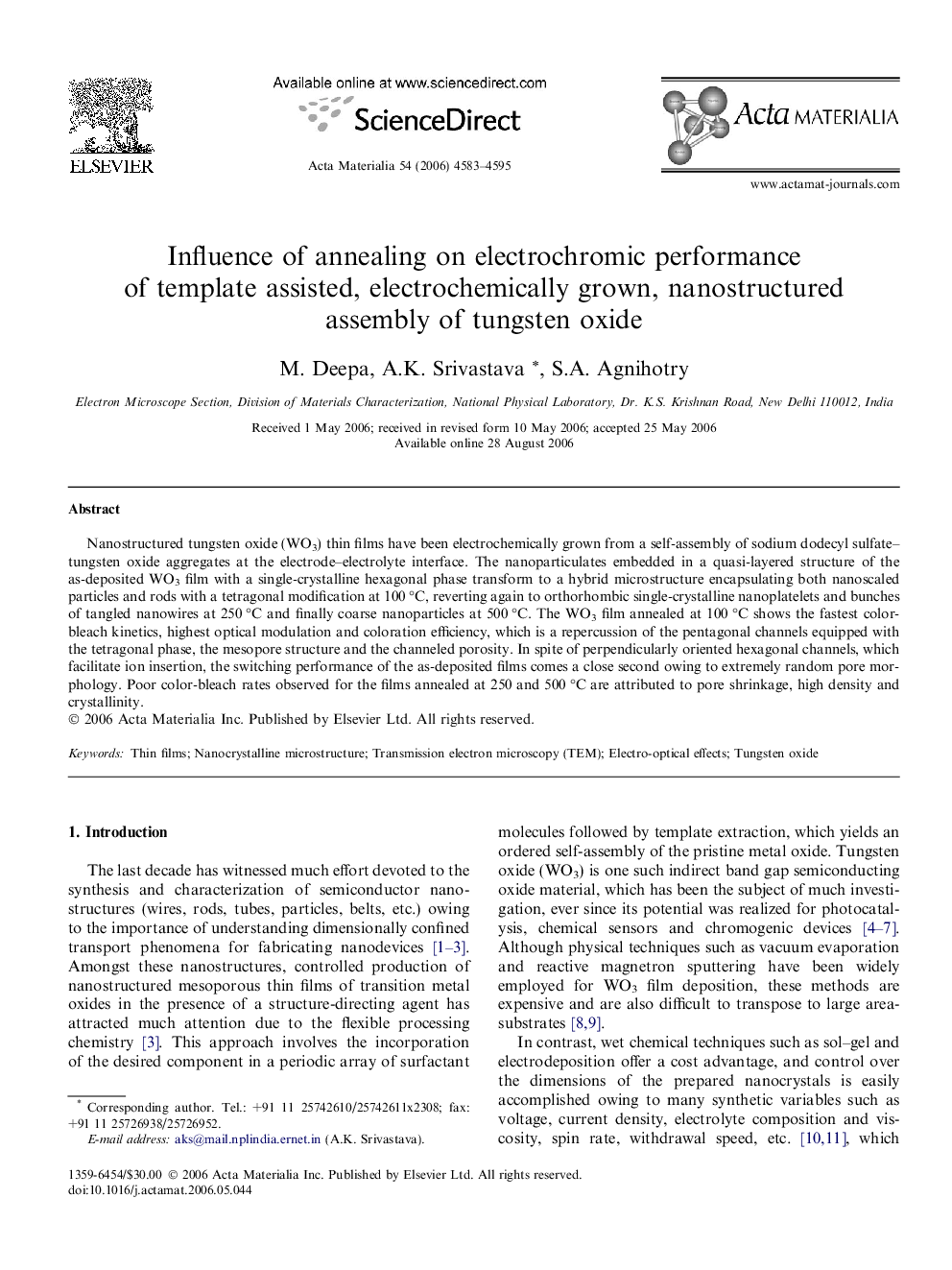| Article ID | Journal | Published Year | Pages | File Type |
|---|---|---|---|---|
| 1450300 | Acta Materialia | 2006 | 13 Pages |
Nanostructured tungsten oxide (WO3) thin films have been electrochemically grown from a self-assembly of sodium dodecyl sulfate–tungsten oxide aggregates at the electrode–electrolyte interface. The nanoparticulates embedded in a quasi-layered structure of the as-deposited WO3 film with a single-crystalline hexagonal phase transform to a hybrid microstructure encapsulating both nanoscaled particles and rods with a tetragonal modification at 100 °C, reverting again to orthorhombic single-crystalline nanoplatelets and bunches of tangled nanowires at 250 °C and finally coarse nanoparticles at 500 °C. The WO3 film annealed at 100 °C shows the fastest color-bleach kinetics, highest optical modulation and coloration efficiency, which is a repercussion of the pentagonal channels equipped with the tetragonal phase, the mesopore structure and the channeled porosity. In spite of perpendicularly oriented hexagonal channels, which facilitate ion insertion, the switching performance of the as-deposited films comes a close second owing to extremely random pore morphology. Poor color-bleach rates observed for the films annealed at 250 and 500 °C are attributed to pore shrinkage, high density and crystallinity.
